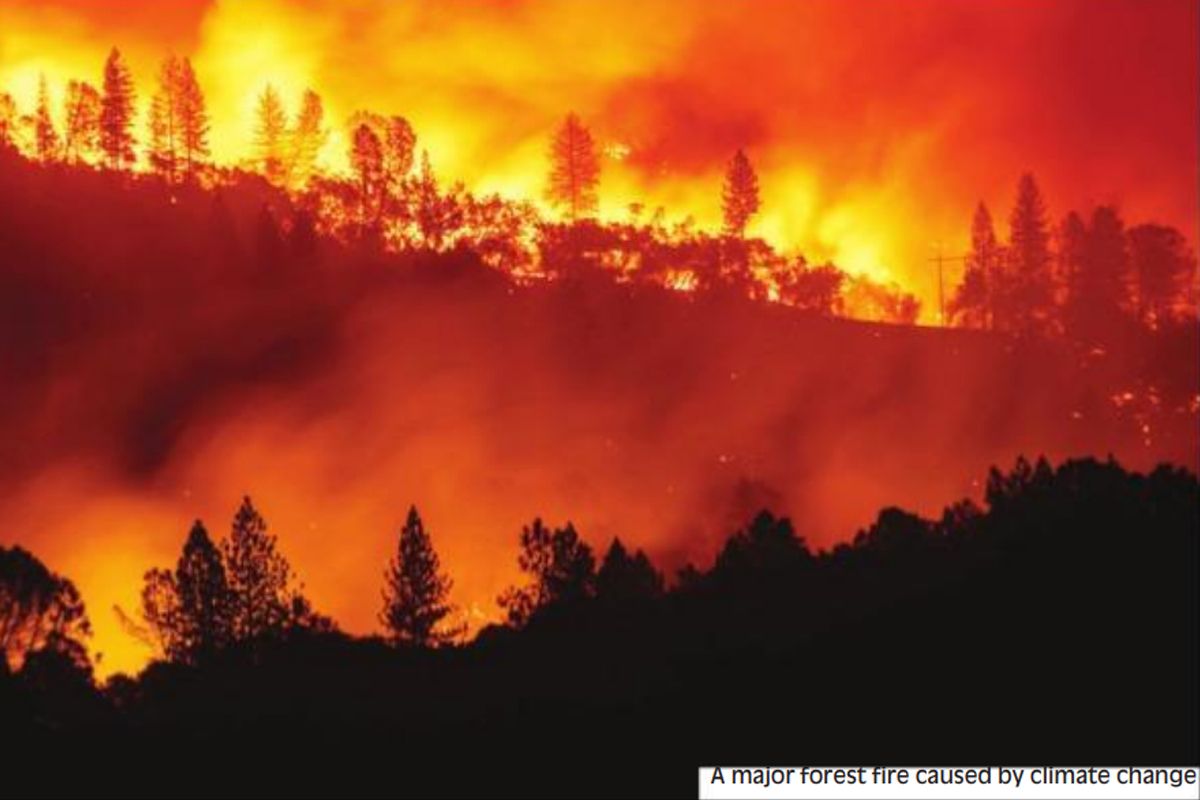Franz Kafka (1883- 1924), a Bohemian novelist who is considered a major literary figure of the 20th century, wrote, “There is infinite hope… but not for us.” His words tell us of the characters in his narratives who embark on various ventures, but seldom succeed. Today, writers highlight these words of Kafka to refer not to Kafka’s characters, but to humanity’s future with reference to climate change. Some of these writers, in present times, similarly project that the hope for a greener planet is “not for us.”
We are informed of mankind’s anguish concerning the problem of climate change. The truth of the matter is that a lot has already occurred, with side effects of climate change being felt the world over. Even a fraction of improvement can make a difference. Should the temperatures climb to an increase of 5 degrees Celsius, it could extinguish several oxygen-providing forms of flora, like phytoplankton, which is mostly a single-celled plant. In stark terms this will result in oxygen levels being drastically lowered.
Advertisement
A thought to counter this serious fall in oxygen is that oxygen levels will actually take a long time to diminish altogether. This leads to another question: what would happen if every living cell on Earth was combusted? To what extent could the atmosphere be impacted if the entire Amazon forest, each blade of grass, flowers, bees, vital pollinators, birds, all marine life and wildlife disappear altogether and only humans remain? With oxygen levels declining and carbon dioxide rising, what kind of an image can we envisage by, say, the year 2100?
To counter these opinions, we are informed that in the Eocene era, 23-66 million years ago, the planet was apparently hotter than it is now; but during that period, oxygen levels never seriously declined.
Professor Jem Bendell, a professor of Sustainability Leadership in the University of Cumbria, explains that the warming of the Eocene period did not really occur within a short span of time; it all took place over a long period, contrary to what is viewed today. This, in fundamental terms, states that if nature is exposed to higher temperatures for thousands of years, it has the opportunity to adapt to those high temperatures. In contrast, if higher temperatures persist for a couple of centuries, ecosystems cannot adapt and the shock becomes palpable.
So, current climate change is in all probability the likely cause for differing trends, affecting both climate and nature. If we have faith in “mankind’s God like intellect,” to quote Darwin, a peremptory need arises to focus on: increased installation of solar and wind energy, which ensures that new heating systems in houses should be low in carbon dioxide and the production of electric cars should be prioritised.
A publication reported that Norway has already achieved 50 percent new electric cars. Bendell wonders if the problem is more scientific than political. To articulate the matter in simpler terms, can the problem of climate change be resolved directly by scientists? Scientists with their inputs can also be supported by certain fields of academia and levels of management.
To highlight a slightly brighter perspective, Bendell asserts that some progress has been achieved: from reducing pollution to habitat conservation and waste management. Efforts have been made to reduce carbon emissions over the past two decades, which includes planning and laws, but efforts need to be intensified.
David Wallace-Wells, an American journalist who writes on climate change has written a book called The Uninhabitable Earth, which was published in March this year. He has focused on the ill-effects of climate change occurring now and what we may expect if the matter is not properly addressed. WallaceWells sheds light on erratic weather conditions encompassing melting ice caps and insects disappearing. Rising sea levels and vanishing coastal zones, storms, hurricanes and floods reminiscent to Noah’s Ark in the biblical episode, evokes a frightening story. He writes of the current scenario, saying, “It is worse, much worse, than you think.” A section of his book has titles with disturbing undertones, including heat-related death, dying oceans and un-breathable air.
Global plastic production is predicted to increase to mind- boggling proportions; in fact, data suggests that by 2050 there will be more plastic than fish in oceans. He continues further about an inexplicable paradox, saying that governments and people are aware of this “horror” but carry on as though the situation of climate change is nonexistent. It seems to reflect TS Eliot’s words: “Humankind cannot bear very much reality.”
Wallace-Wells admits his narrative may be from an alarmist’s point of view. Perhaps that is correct, but to view the other side of the coin, the book is pronouncing a wakeup call to governments and people. The author’s grim tale itself creates awareness, which is actually the first step to counter climate change.











